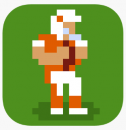| RolStoppable said: Your definitions for arcade and PC sides are strange. You construct a definition to shift the DS more to the PC side ("touchscreen is like mouse"), but the Wii-Remote with its infrared pointer which is even closer to a mouse is completely omitted. Similarly, 3D graphics should not be a defining trait of PC gaming. After all, both Nintendo and Sega made notable prominent efforts to have 3D or pseudo-3D graphics on their 16-bit consoles. The storage medium of a console should not define the arcade or PC side either. I think somebody in this thread already made you aware that Ring Fit Adventure is a big hit on Switch. Same thing for Switch's standard controller which can be broken up into motion controllers similar to the Wii-Remote. Sure, these things aren't going to create the same level of excitement as the Wii because they evolve an idea rather than being the new thing. Similarly, your qualifier of appealing to non-gamers is very arbitrary because in this day and age almost everyone has played a video game at some point with how omnipresent smartphones are in the world. As for your summary:
That's not true because there is a bunch of successful consoles that didn't offer much or anything in terms of new experiences. But if that is the conclusion you wanted to arrive at all along, then it explains the logical inconsistencies in your recap of console history. |
It's funny you think the infrared pointer is the most defining feature of the Wii remote. What matters most is how it is used most commonly, especially in the most popular games. Also, what is the point of this argument? Do you personally believe that Wii is not an arcade machine now, or are you just nitpicking on stuff that you don't really believe in the first place?
3D is definitely an aspect of PC gaming. Myst, DOOM, Wing Commander, etc... were all big 3D franchises in the early 90s. At the same time the arcades had Virtua Fighter and that was about it. The big 90's arcade games were 2D fighting games.
The mistake you make is that you think arcade gaming is defined by consoles. It isn't. Arcade gaming is defined by the games that were in the arcades.
curl-6 bet me that PS5 + X|S sales would reach 56m before year end 2023 and he was right.
My Bet With curl-6
My Threads:
Master Thread, Game of the Year/Decade
Switch Will Be #1 All Time
Zelda Will Outsell Mario (Achieved)
How Much Will MH Rise sell?
My Bet With Metallox








































